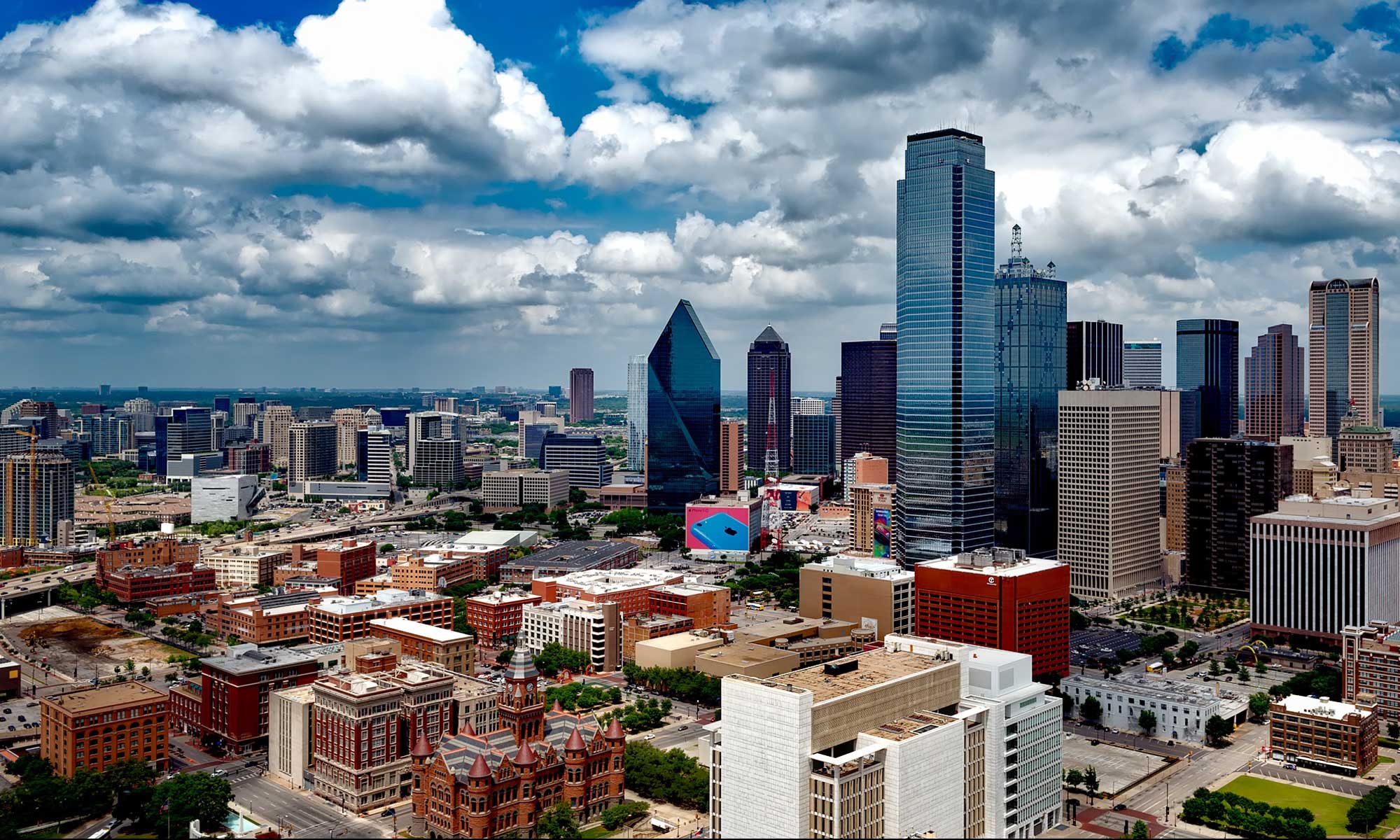While tooling around looking for the neighborhood of Lower Greenville recently, I somehow ended up at White Rock Lake and came across the Bath House Cultural Center. Now, anyone who knows Dallas would probably wonder how the hell I managed to end up there when I was supposedly heading for a whole other part of the city, and don’t ask me how it happened; my only excuse is that I was suffering from a combination of too much heat, irritation at a condescending store clerk, an upset stomach, and an annoying bout of moving house. Yes, I really have been living in Dallas for 15 years, and yes, I really did get completely turned around the other day. These things happen to me. Look, shut up.*
But back to the subject of this essay, which is the venerable Bath House Cultural Center, one of the earliest examples of Art Deco architecture in the American Southwest. The Bath House was constructed on what were then the rural shores of White Rock Lake in East Dallas back in 1930, just 36 years before my birth — which makes it Very Old Indeed. It housed locker rooms, changing areas, concessions, and everything else people needed to prepare to swim in the lake after they converged upon it from miles around. They even rented swimsuits, an idea that makes me shudder (I don’t even like renting bowling shoes).
Fast forward to 1953, just 23 years later, when drought and worries about polio, then still a fearsome threat to public health, conspired to close the place down. The Bath House’s official history also admits that racial tensions had a lot to do with it: back then, at the very verge of the Civil Rights era, Jim Crow was very much alive and well in public life in Texas. I wouldn’t be surprised to learn that the Bath House was off limits to colored folk, and that they were justifiably mad about it. In any case, the place was left vacant until 1978 before a group of neighborhood activists urged the City of Dallas to restore it. They did so, and in 1981 the old Bath House was reborn as the cultural center it is today. Now it’s got a nice little 120-seat theater, two art galleries, several mixed-use areas, and even a darkroom. In the 27 years since it reopened, it’s become something of a Dallas artistic and cultural icon.
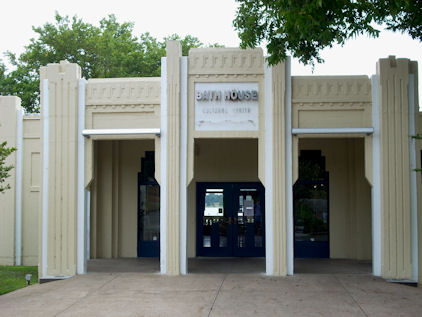
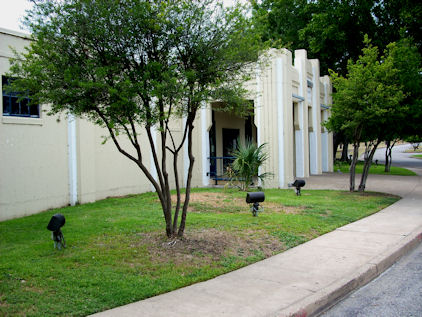
The building itself is faced with stucco and painted an attractive creamy yellow color, which I’m afraid doesn’t really come through well in these photos. As you can see, the Bath House is looking a little neglected here; birds are even nesting in the “O” on the sign. And naturally, the one time I visited the place it was closed for maintenance, so I don’t have many interior shots; but once it reopens on August 26, I’ll head on over and see what I can do to rectify that. Maybe the bird nests will be come by then, eh? In any case, there’s still a great deal to be seen from the outside; for example, the Bath House is located on an attractive stretch of lakeshore, where you can view the remains of the structures the bathers used to use (and that boaters do now, I guess), as well as, in the far distance, downtown Dallas.
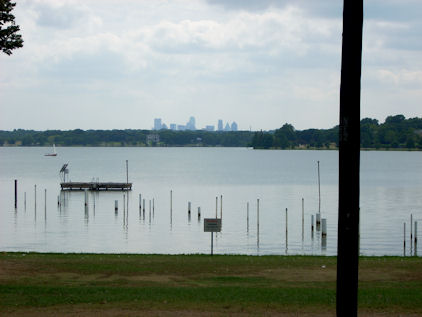
It’s also located on lovely grounds, with mature old trees all around. Said grounds aren’t looking their very best at the moment due to the current drought (which, by the way, is very like the one in the 1950s in terms of length and harshness), but it had just rained for the first time in months when I took these pics, and things were starting to green up again.
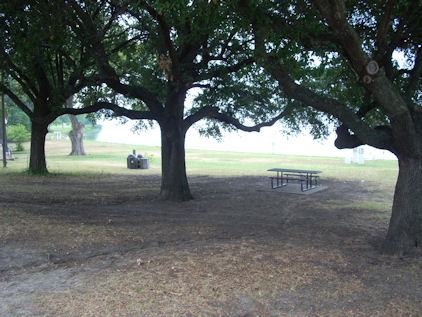
Incidentally, here’s a bit of irony for you:
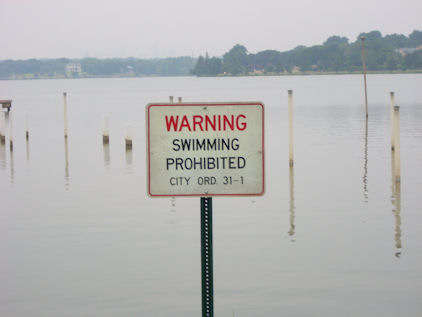
Apparently, City Ord. 31-1 doesn’t apply to these fellows, who were out in force:
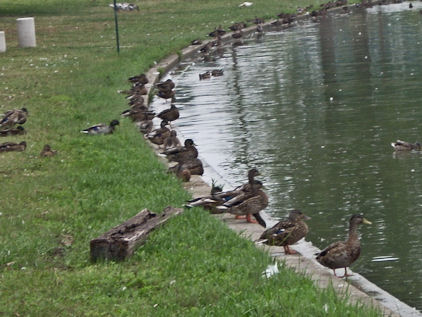
If you come around to the back of the building, you’ll find an attractive covered walkway, more veranda than pergola, facing the lake. It even has one of those sturdy metal telescopes that you can point at spots all along the opposite shore, or use to peek at wildlife or the buildings in the distance. Unlike most of these you see, this one’s free.

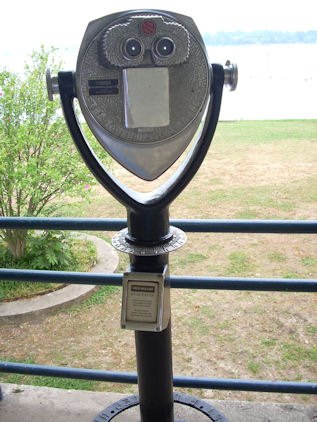
I was quite impressed by their little butterfly garden out front, which is decorated with a rather attractive winged statue, as you can see here. I’m a pushover for cool statues, as you probably know by now.

The garden is planted with what appear to be drought-resistant species of plants, and is labeled an “EARTH-KIND Waterwise Demonstration Garden.” It was created and is maintained by the Dallas County chapter of the Texas Master Gardeners, an organization which I must admit I’d never heard of before.
As I mentioned, I didn’t get a chance to visit the interior, but I was able, at least, to take a picture of the foyer. Here’s what it looks like through the glass of the front door. I can’t wait to see the rest of it — and like I said, I’ll take care of that with a supplementary entry after August 26, when they finally reopen. So expect a Part II of this entry in a few weeks.
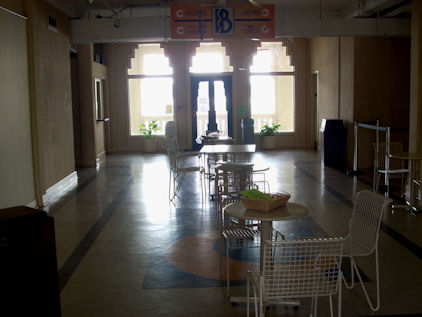
Just as a heads up, here’s a heads-up on the upcoming events at the Bath House Cultural Center. From September 5-27, they’re presenting something called “American Cassandra: Déjà Vu and 9 Parts of Desire.” Hmmm…sounds interesting. In their two gallery spaces, you’ll be able to experience shows called “Imprinted Traces” and “Some Like it Hot.” For even more information on what’s coming up at the Bath House, check out their website at http://www.bathhousecultural.com/.
The Bath House Cultural Center is located at 521 East Lawler Drive in East Dallas. If you have any questions, call (214) 670-8749. If you’re in town, give it a visit. It’s a nice little place, and it’s worth the effort of finding.
*I finally found it today and got the pictures I needed, so there. You’ll see that entry soon enough!
